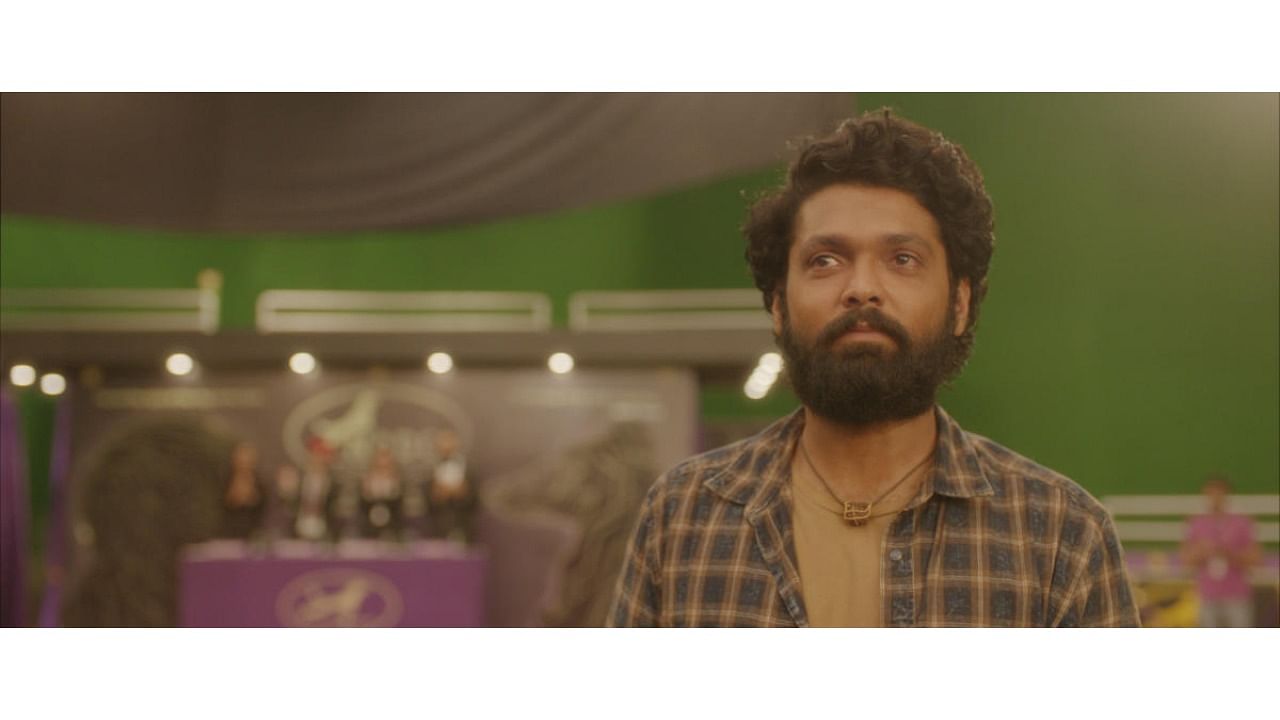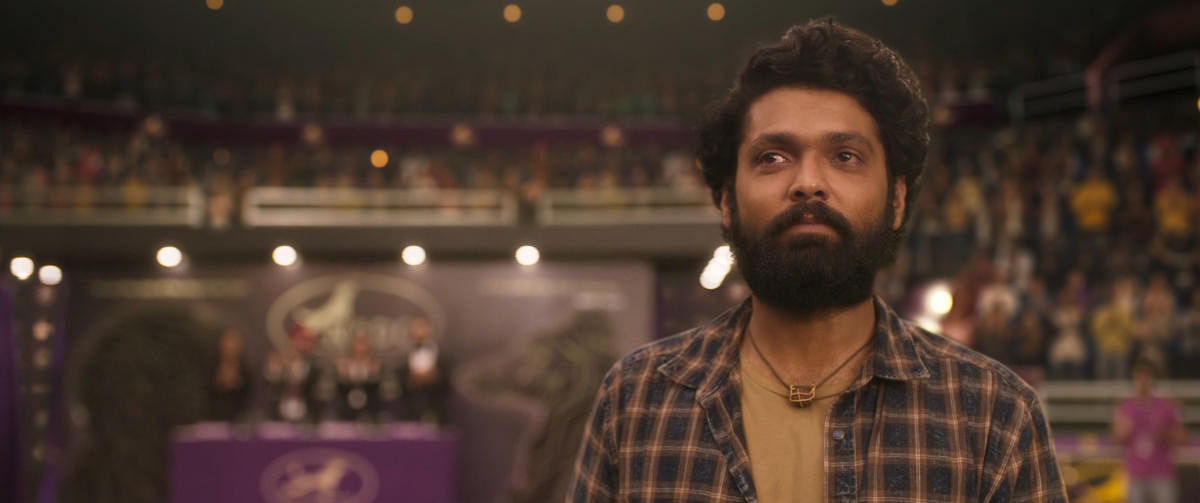

This year, three hit Kannada films — KGF: Chapter 2, 777 Charlie and Vikrant Rona — drew worldwide attention for their visual appeal. What’s more, their VFX design work and computer graphics, were created by studios in Bengaluru.
The results are encouraging for ambitious Kannada filmmakers wanting to explore VFX in their films — a big change in an industry not often known for technological achievements.
Planning and budget
777 Charlie, the heartwarming dog film starring Rakshit Shetty, used a whopping 2,180 VFX shots. The team firmly believes that VFX must only enhance film sequences and not overshadow them.
“In 99 per cent of the scenes, the dog has performed. The trainer gave instructions in almost all scenes, and we’ve removed him using VFX,” says Rahul V Gopalakrishna, the film’s VFX supervisor. In many scenes, the team pasted pictures of cookies on the wall and other objects at points where the dog was supposed to look or turn to. “We removed these during post-production,” he explains.
Rahul says well-defined planning with director Kiranraj K helped him incorporate fresh techniques in some scenes. “There is a scene at a dog show in the film. In such scenes, we generally focus on the characters, the ones performing in the foreground. The crowd in the stands will be de-focused. Even in a case of crowd duplication, the camera will be static,” says Rahul, who works at Pinaka Studios, pioneered by Rakshit.
“We broke the pattern,” he continues. “We fixed the number of rows in the stadium and decided to create an intersection between the rows. So, after eight rows, we created an intersection to make the scene standout. With this, from the next row, the crowd looks elevated. If there is no height difference and no gap between rows, the crowd appears duplicated. When you look at our scene, it looks closer to reality,” explains Rahul, who previously worked in Telugu hits like Businessman (2012) and Attarintiki Daredi (2013).
VFX came in handy when the film team faced a crisis. “In Kashmir, we shot scenes of Rakshit walking and travelling. We filmed the dog playing in the snow but it couldn’t perform beyond that due to weather issues. So the climax outside a temple was shot in Bengaluru. We changed the background and worked on the visual effects to recreate the original location,” he explains about the scene where Dharma (Rakshit) breaks down, after losing his dog.
Saving time
The Sudeep-starrer Vikrant Rona, a suspense drama set in a fictitious world, is the first Kannada feature film to have used the Unreal Engine, an advanced real-time 3D creation tool, claims Nirmal Kumar, head of the film’s VFX production team.
“The tool is less time-consuming and cheaper. Traditionally, after we create something, it goes through modelling, texturing, shading, and then it’s rendered. Only then the director can see the final output and demand changes,” explains Nirmal Kumar, team leader at Radiance FX. The company has worked with Indian and Hollywood biggies like Radhe Shyam (2022), Baahubali 2 (2017), Shang-Chi and The Legend of The Ten Rings (2021), and The Suicide Squad (2021).
In Unreal Engine, everything is live and the director can move around the final output directly. “This creates a world of opportunities. Since it saves time, you don’t compromise on quality either,” he says.
Nirmal reveals how the film’s climax — a long “single” take — came about. “The scene looks like a single take, as if the cameraman moved from down to the first floor and vice versa. It’s practically not possible. Those are 13 shots stitched together to make a single shot. The cameraman (William David) and Sudeep put in a lot of effort because all the stitch points had to be perfect. It was a seven-minute shot, a rarity in Indian cinema. The longest is the 12-minute chase scene in the action thriller Extraction (2022),” elaborates Nirmal.
The film cleverly used computer graphics (CG) as well. “There is a scene where Sudeep jumps from a tree, lands on a bike, and rides through the woods. It was completely CG. We made a digital scan of him and animated him through motion capture,” explains Nirmal.
Research and development
The popular police station destruction scene and shootout scene involving Adheera (Sanjay Dutt) in the gangster film KGF: Chapter 2, starring Yash, were possible due to proper research.
“We got a lot of references from the military to understand what happens when you use such guns. The fire effects through the guns were created through VFX,” says Muthu Balakrishnan, the film’s VFX producer from UNIFI Media.
The VFX, post-production and digital colour correction of 'KGF 2' was done at UNIFI Media under the leadership of Udayaravi Hegde, the managing director. Andrew Shibi was the VFX head while Siva Kumar was the production head. Karunakar and Dhanasekar were technical and creative directors respectively.
Yash’s introduction scene was also VFX-heavy, says Balakrishnan. “Right from the helicopter to the pyramid-like stairs to people with drums giving the protagonist a heroic welcome, everything was done with VFX,” he says, adding that the factory set up and terrain in the film, were also digitally created.
Budget
With the success of KGF: Chapter 1, producers are setting aside a budget for VFX and post-production, says Balakrishnan. Rahul points out that along with time, budget is a key factor. “Local artistes and studios deserve the same amount of remuneration that producers are willing to give to companies outside Karnataka, as we don’t compromise on quality,” says Rahul.
While infrastructure is fast-improving, knowledge-sharing is also important, stresses Nirmal. “In Hollywood, the whole team knows about VFX. The VFX supervisor, cameraman, producer, and director sit together to decide things. This should happen in India too,” he says.